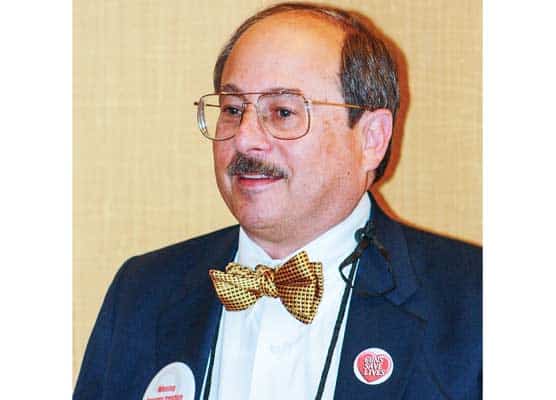Guns | Handguns |
0
Massad Ayoob
A favorite scene in Western movies is a person standing on the scaffold with a noose around his neck, the trap beneath him about to fall away, when… BANG! A bullet from the hero’s trusty Colt or Winchester cuts the hangman’s rope and saves the innocent person’s life. You roll your eyes and say to yourself, “That would never happen in real life!”
Umm, don’t be too sure. Bill Longley was a robber and murderer who claimed to have killed 32 men. In Badasses of the Old West edited by Erin Turner (2010, Morris Book Publishing), we find the following account dating from the year 1869 in or around Yorktown, Texas:
“One evening, vigilantes caught him and a horse thief named Tom Johnson, who had joined Longley at his campfire. Believing that birds of a feather flocked together, the vigilantes strung both men up. Longley, just 16 with five notches already in his pistol, found himself face-to-face with death. But as the vigilantes rode away, they fired their pistols toward their victims in the customary celebration. One of the bullets struck Longley’s rope before he was killed, his heavy body broke the rope, and he recovered from his first hanging. Johnson wasn’t so lucky.”
Yes, Turner wrote “his first hanging.” According to Turner, Ripley’s Believe It Or Not says Bill Longley was hanged three times. History records Longley’s murderous life came to an end in Giddings, Texas, on October 11, 1878. Says Turner, “…the noose slipped, and Longley dropped to his knees. He was hoisted up and dropped again, so you can see why Ripley made the claim about three hangings… Longley, finally doing his last dance in the air, was just six days past his 27th birthday.”
At IDPA or USPSC matches where one contestant faces an array of humanoid targets, we often hear, “Aw, if it was for real, no one could survive against so many bad guys if they had guns, too.” If we think the three silhouettes in Jeff Cooper’s famous El Presidente drill would be insurmountable in real life, let’s consider a lawman who prevailed against 5-to-1 odds.
The opposing camera gives a Hickok’s eye view of Mas (above, arrow)
standing where Tutt was when Hickok traded shots with him. A Springfield,
Missouri, history expert (below) shows Mas where Hickok stood on the
day of famous shootout with Tutt.
In the excellent Internet gun board coltforum.com, a discussion thread that began on August 9, 2015, focused on a particularly fine King Custom Colt New Service .45 revolver, engraved on its right sideplate with the words, “Awarded Bill Keim For Excellent Marksmanship and Bravery, May 22, 1932, Estudillo D.S.” On January 3, 1977 that fine handgun was in the collection of one John S. McDonald, who presumably knew handgun authority Charles Askins, Jr. had a long history with the Border Patrol, which had been Bill Keim’s agency. Charlie, who for many years had been field editor here at GUNS and then on staff with Guns & Ammo, wrote the following back to Mr. McDonald on January 15, 1977:
“Bill Keim was a United States Border Patrolman, he walked into a shack in the dusk of the evening and on entering was shot through the body with a rifle and through the left arm with a pistol in his hand. He started shooting and killed 5 contrabandista who were ranged about the room. All he had to shoot at was the flashes from their guns. He lost his arm as a result of this fracas.”
Col. Askins helpfully added, “The New Service you have was awarded him and is not the gun he used in the skirmish. It was presented by fellow officers. Estudillo is up the Rio Grande from Ojinaga.”
Five against one, at least one rifle on the other side and only one hand with which to return fire? Luck may have been involved, but skill and incredible determination must have been in the mix, too.
Wild Bill Hickok’s choice of firearm was this ivory-stocked engraved 1851
.36 caliber serial 204672. According to the record it, “was sold to help
pay for his burial expenses…” Photo courtesy: Buffalo Bill Center of the
West (Gift of Florence Jenkins and the Donald Becker Family, Dr. and
Mrs. D.L. Becker. 1.69.6284.1)
Showdowns on Western streets at high noon? Dropping an opponent at 75 yards with one pistol shot? All myth? Wild Bill Hickok’s incident occurred closer to 6 p.m. on July 21, 1865, in the Springfield, Missouri, town square. Witnesses seemed to agree Davis Tutt drew first. He fired and missed. Hickok fired once and put a .36-caliber ball from his 1851 Navy Colt in the center of Tutt’s chest. After a 3-day trial for manslaughter, Hickok was acquitted on the grounds of self-defense.
The distance was claimed to be 75 yards. A plaque lies today at the spot where Hickok stood, and a few years ago, a local historian showed me where Tutt would have been positioned. I stepped off the distance, and it did indeed come to just over 70 long paces.
Never say never… “unlikely” and “impossible” are two entirely different things.
Buffalo Bill Center of the West
720 Sheridan Avenue
Cody, WY 82414, (307) 587-4771
www.centerofthewest.org
City of Springfield Missouri
Busch Municipal Building
840 Boonville Ave.
Springfield, MO 65802
(417) 864-1000,
www.springfieldmo.gov


